Reduce Pain in Your Feet, Knees, and Back: Your Quick Crash Course in Zero Drop Work Boots and Minimalist Footwear
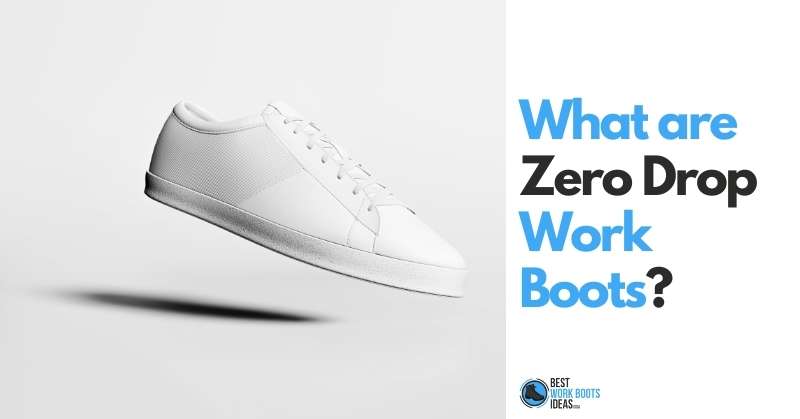
A debated topic in the footwear world is the zero drop boot.
Some advocate for this style of shoe, while others dismiss it as out of control minimalism.
I had never heard of the term “zero drop,” but I had heard of a minimalist boot, naturalist shoe, or other similar names.
I hope the information below helps you decide if this style of footwear is something that could benefit your work and life, or would cause nothing but greater aches and pains we’re all trying to avoid.
Author’s Disclaimer
I’m not taking a position on anything I write below. I’m reiterating all the information available in one simple article to allow you to reach your own conclusions.
As a runner, I’m also someone with extremely flat feet. I’ve gone to a podiatrist and been told “quack” when I asked how it looked.
I’ve worn shoes that had less arch support, less of a drop, and immediately felt pain.
I never bit the bullet and went minimalist or entirely zero drop.
Maybe it’s because zero drop is nonsense, some would certainly say that’s the reason, or if it’s that my body has been so damaged by “supportive” footwear that it will take more time to reacclimate.
I can say that a lot of what I read and watched made sense to me; maybe it will make sense to you as well.
Now let’s get into what a zero drop boot is.
What is a Zero Drop or Minimalist Shoe?
Zero drop boots are a style of footwear in which the heel and ball of the foot are the same distance from the ground. In some cases, this height is measured by a single millimeter instead of inches. This extreme style is sometimes referred to as a minimalist, naturalist, or barefoot shoe.
This is in contrast to traditional running shoes, work boots, or hiking boots which have a substantial drop from where your heel rests and where the ball of your foot rests.
Another aspect of zero drop footwear is the expanded wide toe box that leaves your toes plenty of room to move and spread out.
The idea behind this style is to allow your toes to get involved in the process of walking and running, strengthening your foot overall.
What Are Zero Drop Work Boots?
Zero drop work boots are protective boots that keep your feet level and flat. Unlike most work boots with a raised heel and hearty outsoles, this style of boot will ensure the ball and heel of your foot remain the same distance from the ground. Although difficult, you can find this style with a protective toe cap.
I looked around and actually found a pair (please, hold your laughter), made by Birkenstock.
Believe it or not, but this pair came with slip, oil and puncture resistant outsoles and a steel toe cap.
They didn’t specify if they’re ASTM rated (which makes me think they’re not), but they are rated for the European safety standards “EN ISO 20345:2011.”
This means that you’d be safe while wearing them, but technically out of sync with OSHA.
There are some zero drop work boots out there, but they’re going to be hard to find.
It’s not yet a product style that has broken through to the mainstream, so make sure if you’re looking for zero drop styles, they include the safety features you need.
We will obviously keep an eye out for you and update this article as and when we’re made aware of any.
Cheat Codes for How to Find Zero Drop Work Boots
Although it’s not technically a zero drop boot, you can find some tactical boot styles that have a limited drop.
This could be considered as your transitional phase between high drop and zero drop, helping to prevent injury.
Keep reading, you’ll get what I’m talking about.
Zero Drop Doesn’t Mean You Should Use Zero Percent of Your Brain
Don’t get tricked, all minimalist shoes are zero drop, but not all zero drop are minimalist.
The terms aren’t interchangeable.
For example: platform shoes could accurately be classified as zero drop.
So long as there is an equal distance to the ground between the front and back of the foot, they’re zero drop.
As I’m thinking into my footwear past, I probably had a pair of old school Doc Martens that were zero drop.
I tell you this for a reason besides being cheeky or playing devil’s advocate.
If you find yourself interested in going zero drop, I don’t want you to just grab the first pair you see.
This could result in you getting footwear that’s zero drop in nothing but one arbitrary characteristic.
It’s very easy for manufacturers to hop on a growing trend by marginally meeting a key requirement of the name.
For me, footwear is always purpose-centric, then after that I focus on fashion.
I like a good looking pair of shoes or boots, but I’m the first person to buy the wear that works best over the one that’s in style.
For me, they must be “fit for purpose”.
I bought some Puma running sneakers for half the price of Nike, that felt and worked better.
They’re hideous, but my feet like them.
My wife was horrified.
What can I say?
So what do I mean “fit for purpose”?
Well, as an example, do you need a winter boot with a rubber outsole?
Do you need a waterproof boot with a safety toe ?
Do you require a hiking boot or a Men’s work boot?
See where I’m getting at?
Understand your requirements first and then see if any zero drop boots exist for the purpose.
Otherwise they’ll just be used as a door stop at home.
What’s the Purpose of Zero Drop Boots?
Zero drop footwear is designed to help your body retain its natural step, stride, and sense of being barefoot.
With raised heel footwear, we are essentially changing the shape of our body into something that our bones, muscles, and ligaments were not designed for.
Do an experiment with me real quick, it’s easy and free.
Put your leg on something that supports everything but your foot, it should be something like a bed or coffee table that keeps your leg relatively level with your seated body.
Now, bring your foot to 0 degrees (pointed straight up at the ceiling).
Unless you’re an extremely flexible and well conditioned person, you will feel a tension build in your achilles tendon.
This is a logical result, as most people spend their entire life wearing footwear with a raised heel.
Raise the heel, and you’ve immediately reduced the tension on your achilles, calves, and basically everything else on your body if you continue moving up.
My cousin Caroline and her husband are both physical therapists.
They noted to a patient as he resisted getting a hip replacement that his back problems were almost certainly a direct result of his need for a new hip.
They very concisely explained that as we accommodate pain, wherever it is, by changing our motion, other body mechanics are forced to adjust.
This, in turn, creates new pain.
I know it’s an entirely different topic, but the patient’s back pain went away after he caved and got his new hips.
Anecdotal evidence, yes, but evidence nonetheless of the argument made by the zero drop advocates.
What Are the Conditions That Zero Drop Shoes Claim to Treat?
Heel spurs, shin splints, bunions, plantar fasciitis, knee pain, deformed toes, hip pain, and back pain are just some of the conditions that zero drop shoes claim are suggested to help.
They do this by allowing (and forcing) your foot, calf, and all the muscles and ligaments that connect them to develop strength.
This in turn causes greater cohesive function of all the parts of your body that help you get around.
Keep in mind, if you already have any of the conditions listed above, switching to zero drop shoes tomorrow isn’t going to magically fix it.
If anything, it will probably make it worse. Keep reading, learn a little more, and I have a section that teaches you how to transition over.
In that experiment I asked you to do before, you should have noticed the stress to the back of your ankle and calf.
Well, when you raise the heel as is done in most boots and shoes, the stress doesn’t magically disappear, it just gets transferred to the front of your leg.
This is why many advocates of zero drop footwear claim that the raised heel is actually the cause of knee pain.
They also suggest that cushioned insoles and midsoles in “protective” shoes actually result in us forgetting how to move the way our body was designed to.
They suggest that the cushioning and raised heel of most shoes has more results than the ones we seek.
While we buy these types of shoes to limit the shock to our body while walking and running, it ends up having the opposite effect.
The extra padding and raised heel causes us to lose the sense of where and how hard we’re stepping.
Instead of landing on the ball or center of our feet, we’re smashing down on our heels with every step.
It also results in our balance being thrown off as we’re always leaning forward, just slightly.
This contributes to the stress on the shins, knees, and quads as all those muscles are being activated as we need them just to avoid falling over
Cade details all this in the video below, for anyone who cares to bring the visual element into this.
What Can I Do to Make My Regular Boots More Like Zero Drop Boots?
Nothing, and don’t try. I don’t advise that anyone grab a hacksaw and try to do some civil war era surgery on the outsoles and heels of their boots.
If you’re interested in zero drop boots, go get a pair.
There’s nothing you should ever do to modify the structural design of the shoe.
Beyond the fact that you could hurt yourself in the process, it’s likely that there are elements to your footwear’s design that you were unaware of.
Outsoles, midsoles, shanks, and maybe even features like puncture resistance can be made non-functional if you start hacking away at your boot.
Disclaimer: I am not a medical professional. The information below is for educational purposes only and you should seek medical advice before embarking on any of the techniques mentioned below.
Do I Need to Do Anything To Start Wearing Zero Drop Footwear?
Yes, you need to get into the process gradually.
Even if you’ve decided that you want to go zero drop , you can’t simply start wearing a pair tomorrow and expect to get the result you want.
Doing this will cause pain, and maybe even serious problems like a torn achilles tendon.
If this doesn’t make sense to you, think about crooked teeth.
Imagine I told you I wanted to straighten my teeth, and I was going to put them into place starting tomorrow.
You’d probably look at me like I’d lost it.
It would take time to coax my teeth into the position I want them, and it will take time to acclimate your body to the new form provided by zero drop footwear.
Don’t panic, you probably had your teeth straightened as a kid and that turned out okay. It’s just going to be a little bit of a transition if you want to do the same for your physiology
How Do I Transition to Zero Drop Shoes?
- Walk around barefoot at home.
- Start doing some foot strengthening exercises.
- Walk in zero drop footwear a portion of the time before beginning to run in them.
- Increase the amount (time, distance) you travel in zero drop shoes roughly 10% weekly.
What Do Podiatrists Say About Zero Drop Shoes?
There seems to be a split in the community of podiatrists on the topic of zero drop shoes.
Some like Dr. Miguel Cuhna offers a balanced outlook when he notes that zero drop shoes are great for developing foot and leg strength that has cascading benefits to posture and balance.
However, this assumes that the wearer has no pre-existing conditions and has a physical build that is accepting of zero drops.
He continues on to say that those with bunions, hammer toes, and other conditions can actually exacerbate those conditions when running with little support on hard surfaces.
Dr. Nelya Lobkova is a podiatrist who would disagree with probably everything I’ve included here.
Dr. Lobkova notes that the worst shoes for someone with a condition like heel spurs or plantar fasciitis is a minimalist shoe.
Then there is research to suggest that a zero drop shoe and a normal shoe have no effect whatsoever.
Research conducted by Dr. Richard Willy (PhD) also suggests that a minimalist shoe (for the short term) adds more load onto the foot.
Do I Need to Break Zero Drop Shoes In?
All shoes have some period of breaking in, but zero drop shoes will require less time than leather boots or other styles of shoes.
This can be attributed to the fact that there’s usually far less material in zero drops, so it would make sense that there’s less material to break in.
It’s also characteristic of zero drop shoes that they have a thin, flexible outsole that doesn’t restrict their corresponding uppers.
Are Zero Drop Shoes Bad For Your Knees?
Just as there is no conclusive evidence that padded shoes with raised heels prevent injury or knee pain, there is no conclusive evidence that states zero drop shoes cause it.
Review your experience with footwear, think about where your pain has usually come from, and come to your own conclusion.
Hopefully the information above has helped you with some food for thought on minimalist work boots.
You might also be interested in learning about work boots for flat feet.

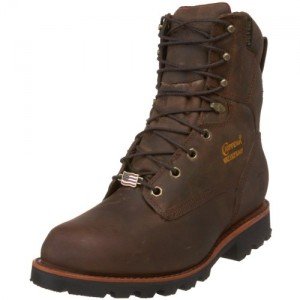
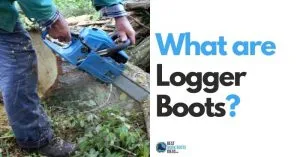
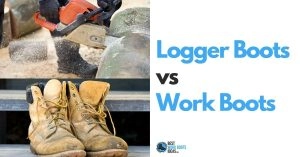

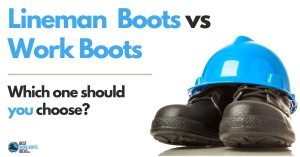
![What are the 5 Best Pull On Waterproof Work Boots for Men like You? [Mini Review + Buying Guide]](https://www.bestworkbootsideas.com/wp-content/uploads/2019/08/Carhartt-11-Inch-Steel-Toe-Wellington-CMP1220-300x300.jpg)
